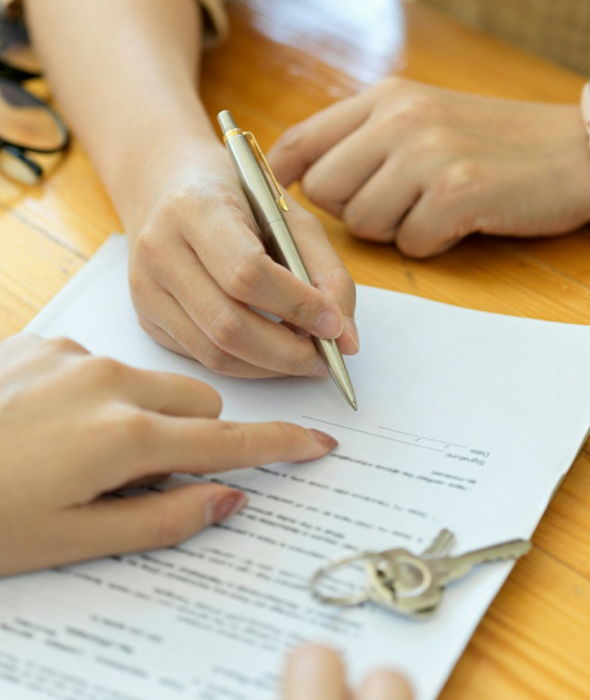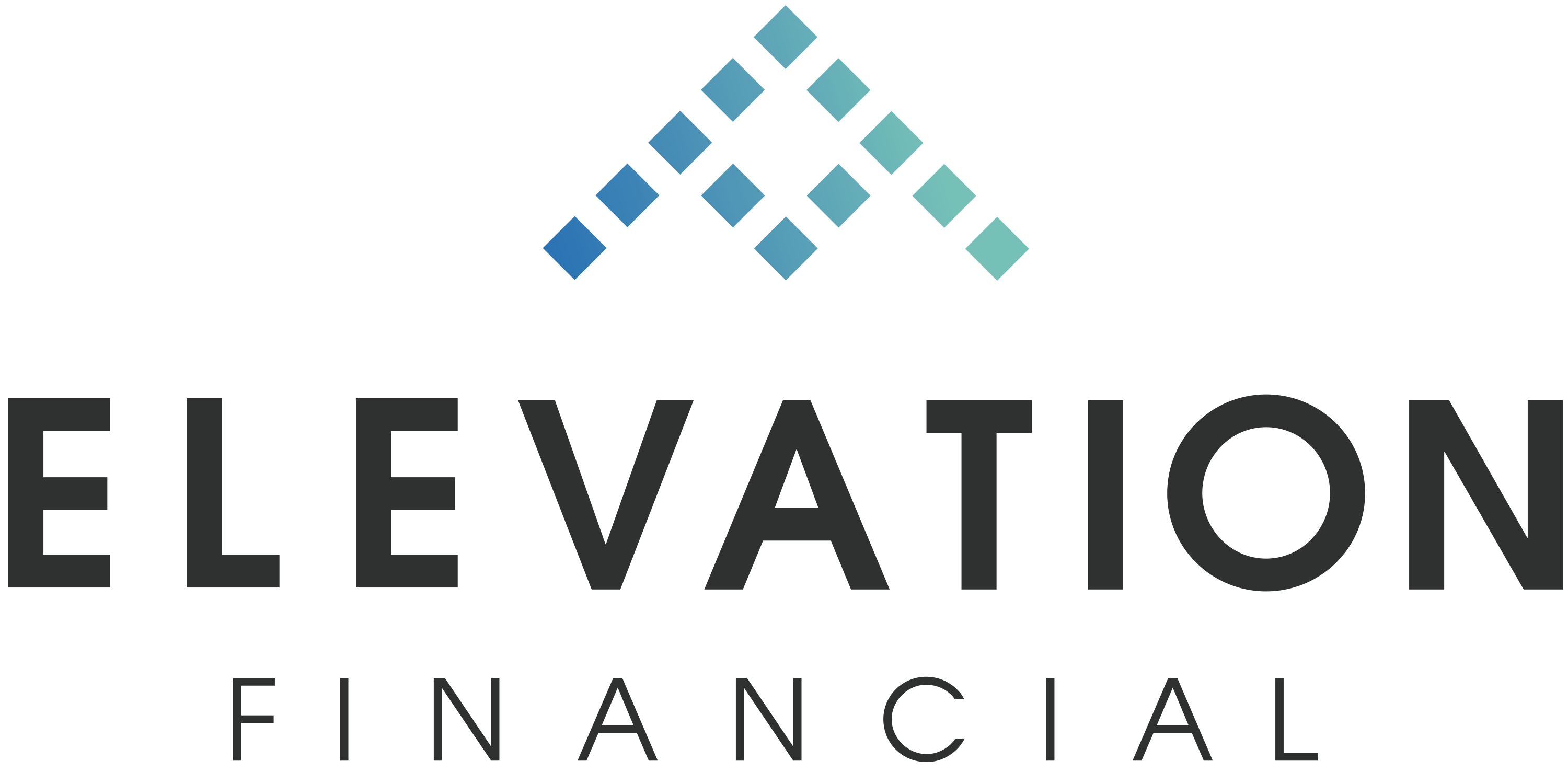
Share this Post
Subscribe

Need help with your money or investments? Book a consultation to learn more about working together.
Should I Use My HELOC as an Emergency Fund?
[Prefer to listen? You can find a podcast version of this article here: E280: Should I Use My HELOC as an Emergency Fund?]
When financial advisors talk about emergency funds, they typically paint a pretty standard picture: three to six months of expenses sitting in a high-yield savings account, ready to access when life throws you a curveball. It's simple, safe, and exactly what most people expect to hear.
But then you look at your home equity line of credit sitting there with a $50,000 or $100,000 credit limit, and a thought crosses your mind: Why am I letting cash earn a little bit of interest in a savings account when I could invest that money (in theory the goal being for more growth) and just tap my HELOC if I need it?
It's a fair question. And honestly, it's one that doesn't have a one-size-fits-all answer.
Understanding HELOCs as Emergency Funds
A home equity line of credit gives you access to a revolving credit line secured by your home's equity. Unlike a traditional loan where you receive a lump sum, a HELOC works more like a credit card. You can draw money when you need it, pay it back, and draw again during the draw period, which typically lasts 10 years.
The appeal is obvious. Instead of parking $30,000 in a savings account, you could invest that money in the market or use it to pay down higher-interest debt. Then, if an emergency hits, you tap your HELOC.
On paper, it seems efficient. In practice, it's more complicated.
The Case for Using a HELOC as an Emergency Fund
Let's start with why this strategy can look attractive on the surface.
Higher Returns on Your Money
The math is straightforward. Hypothetically, let’s say a savings account pays 3% and the stock market historically returns around 9% annually (again, this is hypothetical, not specific advice or guarantees). Keeping less cash on hand and more money invested could theoretically leave you better off over time.
For someone with a stable income, excellent credit, and significant home equity, the opportunity cost of keeping large amounts of cash in savings can feel substantial. Over a decade, the difference between earning 3% and 9% on $50,000 is significant.
Flexibility and Scalability
A HELOC can provide more borrowing capacity than most people would reasonably keep in savings. If you face a $60,000 emergency and only have $20,000 in savings, you'll need to find another funding source anyway.
With a HELOC, you have access to larger amounts of capital if needed. You're not limited by how much you've managed to save.
Interest-Only Payments During Draw Period
During the draw period, most HELOCs require only interest payments on the amount you borrow. This can make the monthly cost of using your HELOC pretty manageable, especially compared to the fixed principal and interest payments required with a traditional loan.
If you borrow $10,000 at a 9% interest rate, your initial monthly payment might only be $75 in interest. That gives you breathing room to recover financially without the pressure of large monthly payments.
The Risks of Relying on a HELOC
Now for the other side of the equation, which is where things get uncomfortable.
Your Home Is the Collateral
This is the big one. When you use your home to secure a line of credit, you're putting your home at risk. If you're unable to make payments on your HELOC, you could face foreclosure.
An emergency fund in a savings account has zero risk to your housing security. A HELOC does. That's a fundamentally different risk profile.
HELOCs Can Be Frozen or Reduced
Here's what may keep you up at night about using a HELOC as an emergency fund: the bank can freeze or reduce your credit line when you might need it most.
During the 2008 financial crisis, many homeowners discovered this the hard way. As home values dropped, lenders froze HELOCs or reduced credit limits, sometimes without much warning.
People who thought they had $100,000 in available credit suddenly had $20,000 or nothing at all.
The worst part? This often happens during times of economic downturns, which is exactly when you're more likely to face a job loss or other financial emergency.
Variable Interest Rates Create Uncertainty
Most HELOCs have variable interest rates tied to the prime rate. When the Federal Reserve raises rates, your HELOC rate goes up too.
In a low-rate environment, borrowing at 4% or 5% feels manageable. But rates can and do change quickly. In 2022 and 2023, we saw the Fed raise rates at one of the fastest paces in history. Someone who set up a HELOC strategy when rates were 3% might find themselves facing rates of 9% or higher.
If you lose your job during a period of rising rates, you're not just dealing with lost income. You're also facing higher borrowing costs on any money you need to access.
Temptation to Use It for Non-Emergencies
This is more of a behavioral issue, but it matters. A HELOC feels less "real" than watching your savings account balance drop. That psychological distance can make it easier to justify non-emergency expenses.
Before you know it, you've used your emergency fund for a kitchen renovation, and when a real emergency hits, your HELOC is already partially tapped out.
When a HELOC Strategy Might Work
Despite the risks, there are scenarios where using a HELOC as part of your emergency strategy could make sense. The key here is the word "part."
You Have a True Emergency Fund Plus a HELOC
Some people take a hybrid approach. They keep a smaller cash emergency fund, maybe two or three months of expenses, and view their HELOC as a backup layer of protection for larger or extended emergencies.
This gives you immediate access to cash without needing to apply for or draw on credit during a crisis. But you still have the HELOC available if you need more than your cash reserves.
Your Income Is Very Stable
Suppose you work in a profession with exceptional job security, or you have multiple income streams. In that case, the risk of needing emergency funds while simultaneously being unable to make HELOC payments decreases significantly.
Tenured professors, certain government employees, or business owners with long-term contracts and diversified revenue might fit this category.
But even then, unexpected medical expenses or other emergencies can arise regardless of income stability.
You Have Excellent Financial Discipline
Using a HELOC as part of your emergency strategy requires discipline. You need to be someone who won't touch it for non-emergencies and who will aggressively pay it down if you do use it.
You also need to have a plan for monitoring your available credit and staying aware of any changes your lender might make to your line.
What Most People Should Do Instead
For the majority of people, a traditional emergency fund still makes more sense as the foundation of financial security.
Start with Cash Reserves
Three to six months of essential expenses in a high-yield savings account or money market fund gives you true liquidity and zero risk to your home. Yes, you might earn less on this money, but that's the cost of insurance.
Financial security isn't always about optimizing every dollar for maximum returns. Sometimes it's about sleeping well at night, knowing you can handle whatever comes your way.
Consider a HELOC as Supplemental Coverage
If you want to pursue this strategy, consider establishing a HELOC but thinking of it as backup coverage rather than your primary emergency fund.
Keep your cash emergency fund intact. Set up a HELOC for additional borrowing capacity if you need it. This gives you the best of both worlds: immediate liquidity without credit applications during a crisis, plus additional capacity if you face an unusually large or prolonged emergency.
Calculate Your True Risk Tolerance
Before making this decision, run through some scenarios. What would happen if you lost your job during a recession when your home value had dropped 20% and interest rates were at 10%?
Could you still make HELOC payments while covering your essential expenses? Do you have other resources you could tap? How does your partner feel about using your home as collateral for emergency expenses?
These aren't necessarily fun questions to consider, but they're important ones.
The Economic Environment Matters
Your decision about whether to use a HELOC as an emergency fund shouldn't happen in a vacuum. The current economic environment should influence your thinking.
In a low-rate environment with a strong housing market, the risks of a HELOC strategy are somewhat lower.
In a high-rate environment or when housing markets are volatile, those risks increase substantially.
This doesn't mean a HELOC strategy is off the table, but it does mean you need to be realistic about the risks you're taking on.
Making the Decision
If you're considering using a HELOC as your emergency fund, ask yourself these questions:
How stable is your income? If you lost your job tomorrow, how long would it realistically take you to find comparable employment?
What's your home equity position? Do you have substantial equity that would protect you even if home values dropped?
What's your risk tolerance? Honestly assess how you'd feel using your home as collateral and potentially facing variable interest rates during a crisis.
Do you have backup resources? Are there other places you could access funds if your HELOC was frozen or reduced?
What's your financial discipline like? Can you resist the temptation to use credit for non-emergencies?
These questions don't have right or wrong answers, but they should guide your decision.
The Bottom Line
Using a HELOC as an emergency fund isn't always inherently wrong, but it's also not the straightforward optimization it might appear to be on the surface.
The strategy works best for people with stable incomes, strong financial discipline, substantial home equity, and a clear understanding of the risks involved.
It works even better when it's part of a layered approach that includes some cash reserves rather than a complete replacement for traditional savings.
For most people, especially those still building wealth or with variable income, a traditional emergency fund remains the smarter choice.
The peace of mind that comes from having cash available without risking your home or depending on a lender's willingness to extend credit is worth the opportunity cost of slightly lower returns.
Remember that investing is not just about maximizing growth. It's also about managing risk.
Your emergency fund exists for the worst-case scenarios. Make sure your strategy still works even when everything else is going wrong.
Additional Information: Frequently Asked Questions About HELOCs
How much does it cost to set up a HELOC?
Setting up a HELOC typically costs between $0 and $1,000, depending on your lender and location. Some lenders waive closing costs entirely, while others charge for appraisals, title searches, and application fees. Be sure to ask about annual fees as well, as some HELOCs charge a yearly maintenance fee whether you use the line of credit or not.
Can my lender really freeze my HELOC without warning?
Yes, lenders can freeze or reduce your HELOC under certain circumstances, and they're often within their rights to do so based on the terms in your agreement. Common triggers include a significant drop in your home's value, a major change in your credit score, or widespread economic instability. While lenders typically provide some notice, it may not be much, and it often happens when you're most likely to need the funds.
What's the difference between a HELOC and a home equity loan?
A HELOC is a revolving line of credit that works like a credit card, allowing you to borrow, repay, and borrow again during the draw period. A home equity loan gives you a lump sum upfront with fixed monthly payments from day one. HELOCs typically have variable interest rates, while home equity loans usually have fixed rates. For emergency fund purposes, a HELOC offers more flexibility since you only borrow what you need when you need it.
How long does it take to access money from a HELOC once it's established?
Once your HELOC is set up, accessing funds is usually very quick. Many lenders provide checks, a debit card linked to the account, or online transfer options that make funds available within one to three business days. Some even offer same-day access. However, the initial setup process can take three to six weeks, which is why you should establish a HELOC well before you need it.
What happens to my HELOC if I lose my job?
If you lose your job, your existing HELOC typically remains available as long as you continue making required payments. However, if you're unemployed and try to apply for a new HELOC or increase your credit line, you'll likely be denied since lenders verify income as part of the approval process. This is one of the key risks of relying solely on a HELOC for emergencies rather than having cash reserves.
Are there tax benefits to using a HELOC for emergency expenses?
HELOC interest is only tax-deductible if you use the funds to buy, build, or substantially improve your home. Using HELOC funds for emergency expenses like medical bills, car repairs, or living expenses during unemployment does not qualify for a tax deduction. This is an important distinction that makes HELOCs less attractive for emergency use compared to home improvement projects.
How much home equity do I need to qualify for a HELOC?
Most lenders require you to maintain at least 15% to 20% equity in your home after establishing the HELOC. For example, if your home is worth $400,000 and you owe $250,000 on your mortgage, you have $150,000 in equity. A lender might allow you to borrow up to 85% of your home's value, minus your existing mortgage, which would be $90,000 in this scenario.
What credit score do I need to get a HELOC?
Most lenders require a credit score of at least 620 to qualify for a HELOC, though you'll get better rates with a score of 700 or higher. If your credit score is below 620 or drops significantly after you've established your HELOC, the lender may freeze your line or decline to renew it when the draw period ends.
Can I still get a HELOC if I'm self-employed?
Yes, but it can be more challenging. Self-employed borrowers typically need to provide two years of tax returns, profit and loss statements, and other documentation to verify income. Lenders are generally more conservative with self-employed applicants since income can be less predictable. If you're self-employed, having a traditional cash emergency fund becomes even more important given the additional scrutiny you'll face when applying for credit.
What happens after the HELOC draw period ends?
After the draw period ends (typically after 10 years), you enter the repayment period, which usually lasts 10 to 20 years. During this time, you can no longer draw funds, and you must make principal and interest payments on any outstanding balance. Your monthly payment will likely increase significantly compared to the interest-only payments during the draw period. Some lenders allow you to renew or refinance your HELOC, but this isn't guaranteed.
Should I keep my HELOC open even if I'm not using it?
Generally, as long as there's no annual fee or the fee is minimal, it could make sense to keep it open. An unused HELOC doesn't cost you anything beyond potential maintenance fees, and it provides a safety net if you need it. However, be aware that having a large unused credit line can sometimes affect your ability to qualify for other loans, as lenders consider it potential debt even if you haven't drawn on it.
How quickly can home values drop enough to trigger a HELOC freeze?
During the 2008 financial crisis, some markets saw home values drop 20% to 50% within a year or two. However, smaller declines of 10% to 15% can be enough to trigger action from your lender if it pushes your loan-to-value ratio above their comfort level. This is why relying exclusively on a HELOC for emergencies is risky during economic uncertainty or in volatile housing markets.

